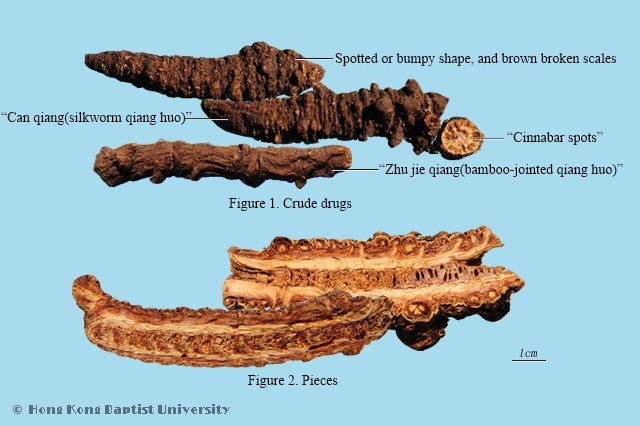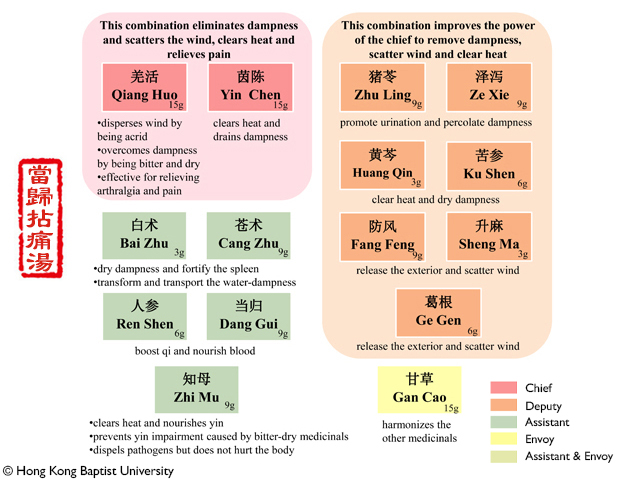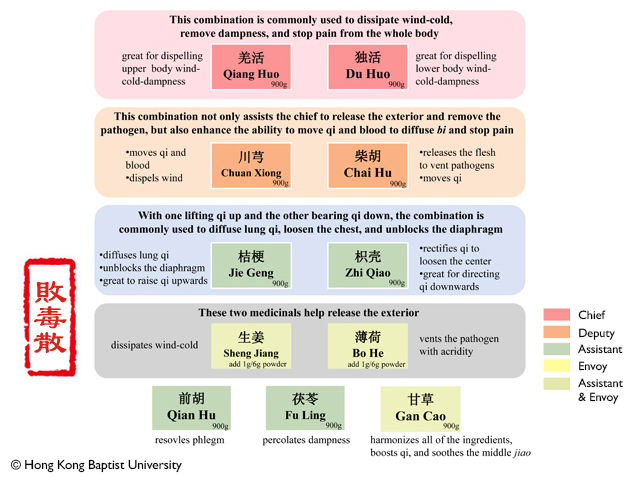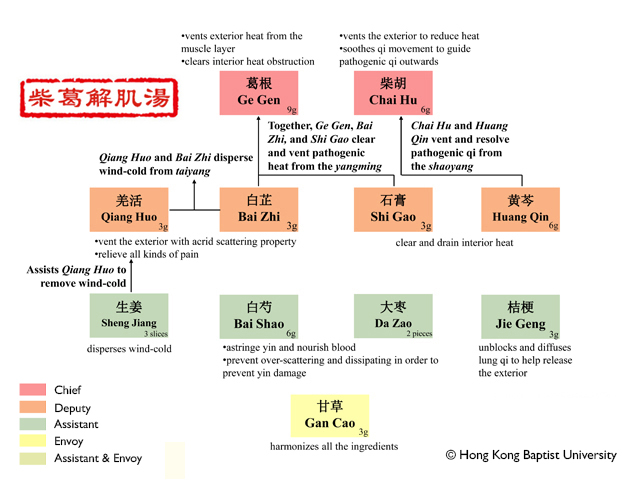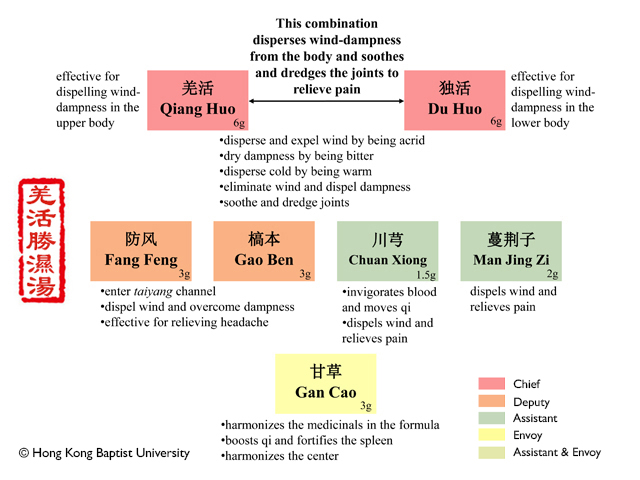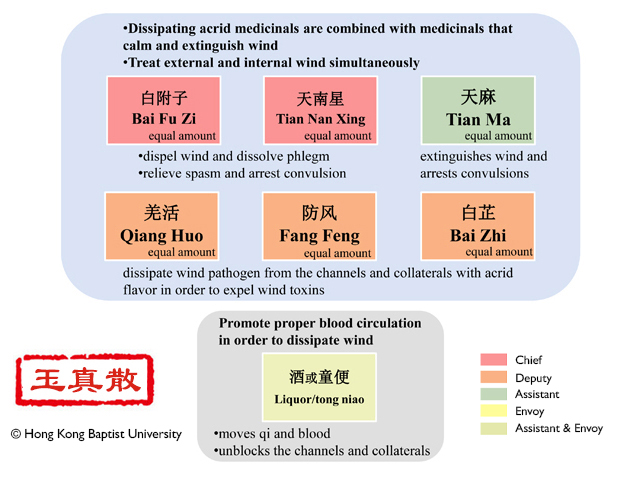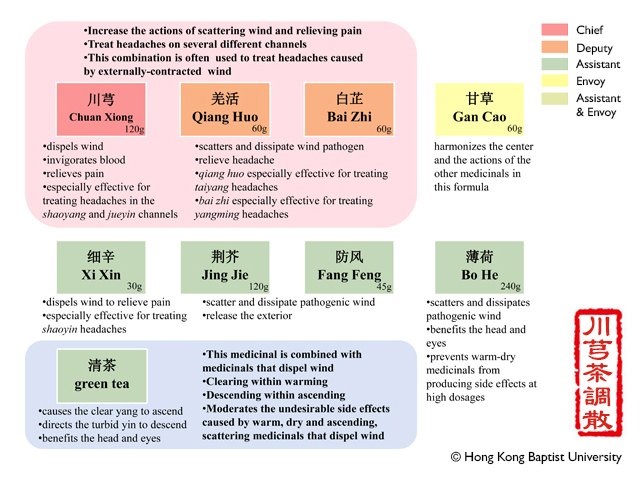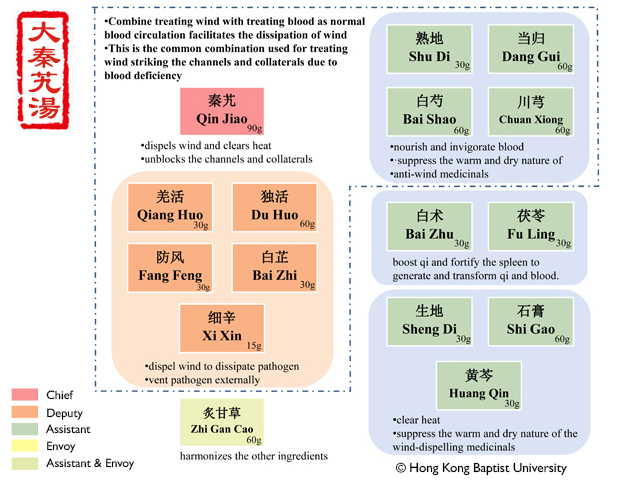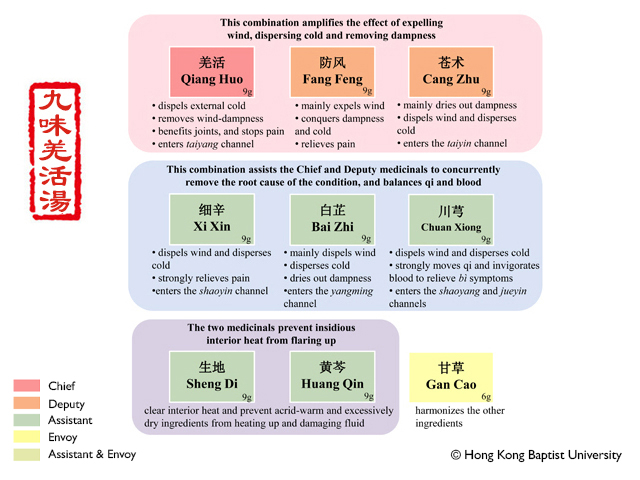Toxin-Resolving Powder
Action:Dissipates cold, removes dampness, boosts qi, and releases the exterior.
Indication:Bai Du San is indicated for the pattern of externally contracted wind-cold-dampness. The symptoms are strong aversion to cold, high fever, headache, neck stiffness and pain, body soreness and pain, absence of sweating, stuffy nose, harsh voice, cough with phlegm, pi, and distressed chest and diaphragm. The tongue is pale with a white coating, and the pulse is superficial and forceless upon pressing.
